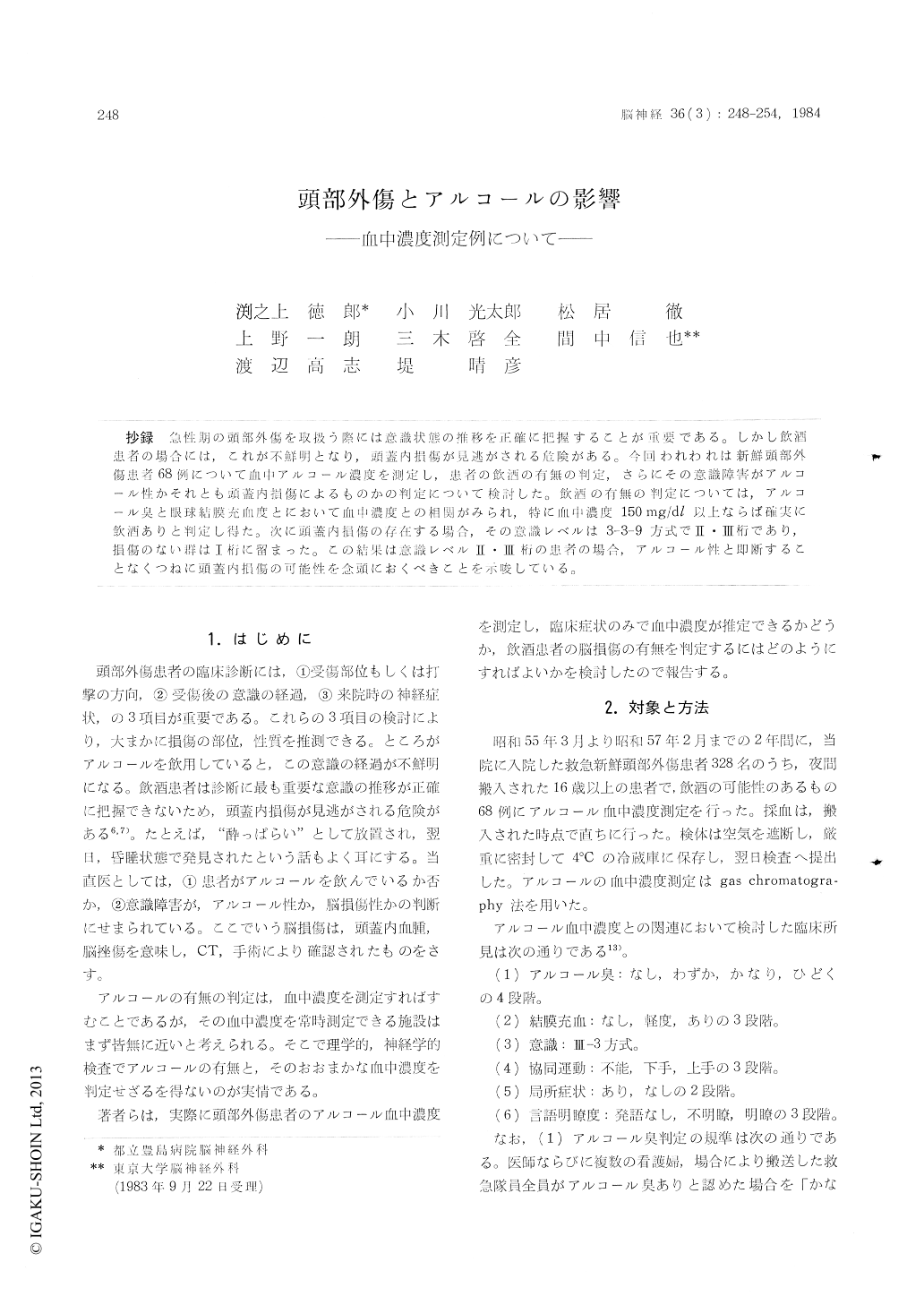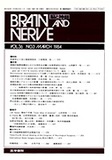Japanese
English
- 有料閲覧
- Abstract 文献概要
- 1ページ目 Look Inside
抄録 急性期の頭部外傷を取扱う際には意識状態の推移を正確に把握することが重要である。しかし飲酒患者の場合には,これが不鮮明となり,頭蓋内損傷が見逃がされる危険がある。今回われわれは新鮮頭部外傷患者68例について。血中アルコール濃度を測定し,患者の飲酒の有無の判定,さらにその意識障害がアルコール性かそれとも頭蓋内損傷によるものかの判定について検討した。飲酒の有無の判定については,アルコール臭と眼球結膜充血度とにおいて血中濃度との相関がみられ,特に血中濃度150mg/dl以上ならば確実に飲酒ありと判定し得た。次に頭蓋内損傷の存在する場合,その意識レベルは3-3−9方式でII・III桁であり,損傷のない群はI桁に留まった。この結果は意識レベルII・III桁の患者の場合,アルコール性と即断することなくつねに頭蓋内損傷の可能性を念頭におくべきことを示唆している。
Alcoholic intoxication and a traumatic intracra-nial lesion have many features in common. It is important for a doctor not to make an incorrect diagnosis between these two conditions, but it is difficult in some cases. The effect of alcohol on the conscious level may complicate the assessment of patients and make it more difficult to recognize the development of complications such as intra-cranial hematoma. The most immediate and correct diagnosis can be obtained by estimating the amount of alcohol in a patient's blood although it is often difficult in the usual emergency depart-ments in Japan.
To try to throw some light on this question, we decided to attempt both clinical and laboratory diagnosis of alcohol ingestion. In 68 adult patients who had head injuries with conscious disturbance admitted to our ward at night, alcohol levels in their blood were estimated by gas chromatogra-phy, during the past 24 months. At the same time clinical examinations for the diagnosis of drunken-ness were made: on admission, it was recorded whether all patients had white or red conjunctiva, whether speech was clear or slurred, whether there was a distinctive smell on their breath, and whether coordination was good or poor. Of 68 patients (63 male, 5 female), 7 had no alcohol intheir blood and 61 had positive alcohol results. The mean blood alcohol level was 233±130 mg/dl.
Clinical diagnosis of alcohol ingestion; The amount of alcohol in the blood correlated highly with the strength of the smell on their breath and of conjunctival injection (p<0.001), on the other hand, did not correlate with the speech disturb-ance, skillfullness of coordination and level of consciousness. There were almost no errors in clinical diagnosis in patients with blood levels of over 150 mg/dl, but there were 7 errors in 15 patients with blood levels below 150 mg/dl.
Clinical diagnosis of intracranial lesion; Infra-cranial damage was most severe and frequent among patients who had had 'a fall under the influence'. The conscious level of a patient with a head injury is a most informative indica-tion of intracranial lesion. It is therefore useful to be able to distinguish cases in which the de-pression of the conscious level is due to intracra-nial damage rather than to the effect of alcohol. Although it was not possible to definitely correlate the conscious level with the alcohol level, almost all of the patients without a serious head injury in our series had the conscious level of I assessed by using the III-3 formula and those with serious injury had more depressed conscious level of II~III, regardless of the amount of alcohol in their blood.

Copyright © 1984, Igaku-Shoin Ltd. All rights reserved.


